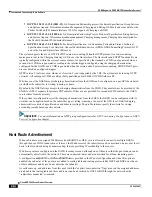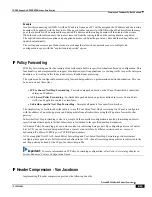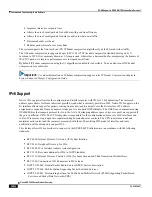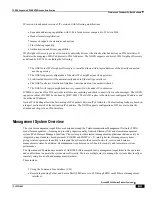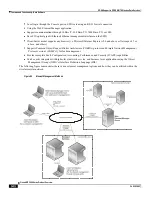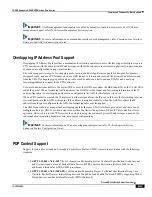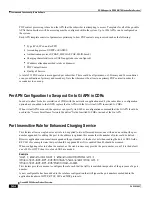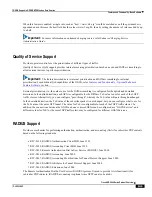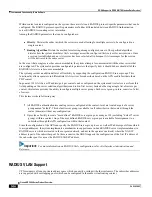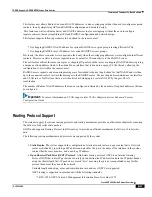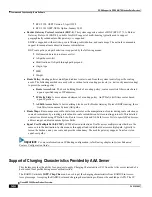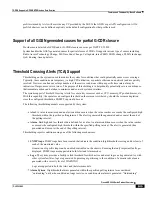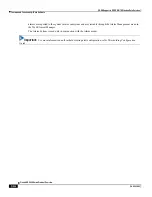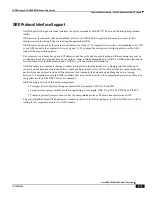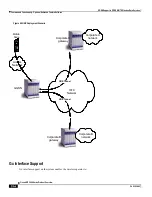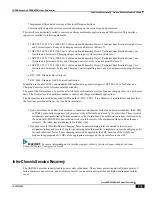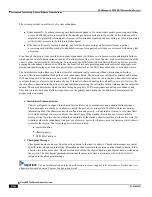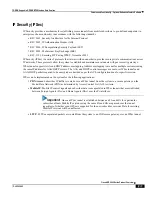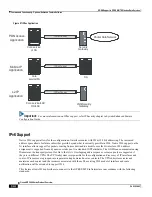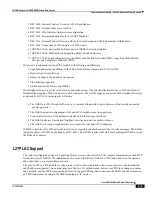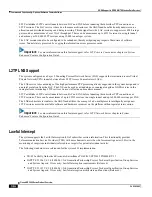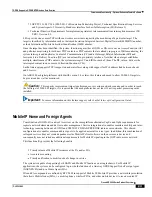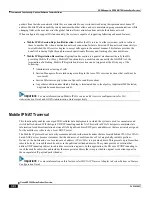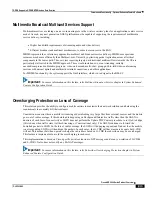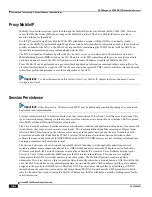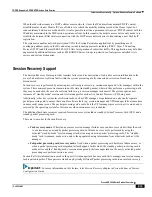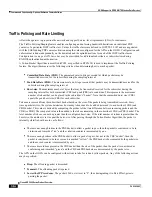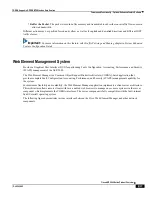
GGSN Support in GPRS/UMTS Wireless Data Services
▀ Features and Functionality - Optional Enhanced Feature Software
▄ Cisco ASR 5000 Series Product Overview
OL-22938-02
same IP addressing behavior and to use a common set of egress interfaces, regardless of the access technology (3G or
4G).
This solution allows static customers to access their network services with the same IP addressing space assigned for
wireless data, regardless of the type of connection (CDMA, eHRPD/LTE or GSM/UMTS). Subscribers using static IP
addressing will be able to get the same IP address regardless of the access technology.
For more information on this product, refer
Common Gateway Access Support
section in GGSN Service Administration
Guide.
Converged DSL Support on the GGSN
Digital Subscriber Line (DSL) is one of the dominant technologies used to provide wired broadband access to
consumers and SOHO/ROBO today. DSL operates over copper telephone line owned by Local Exchange Carriers, who
often have strong relationships to the Mobile Wireless Operators either through shared ownership or joint holdings. This
feature allows Mobile Wireless Operators to provide DSL converged services with the GGSN.
Dynamic RADIUS Extensions (Change of Authorization)
Dynamic RADIUS extension support provide operators with greater control over subscriber PDP contexts by providing
the ability to dynamically redirect data traffic, and or disconnect the PDP context.
This functionality is based on the RFC 3576, Dynamic Authorization Extensions to Remote Authentication Dial In User
Service (RADIUS), July 2003 standard.
The system supports the configuration and use of the following dynamic RADIUS extensions:
Change of Authorization
: The system supports CoA messages from the AAA server to change data filters
associated with a subscriber session. The CoA request message from the AAA server must contain attributes to
identify NAS and the subscriber session and a data filter ID for the data filter to apply to the subscriber session.
Disconnect Message
: The DM message is used to disconnect subscriber sessions in the system from a RADIUS
server. The DM request message should contain necessary attributes to identify the subscriber session.
The above extensions can be used to dynamically re-direct subscriber PDP contexts to an alternate address for
performing functions such as provisioning and/or account set up. This functionality is referred to as Session Redirection,
or Hotlining.
Session redirection provides a means to redirect subscriber traffic to an external server by applying ACL rules to the
traffic of an existing or a new subscriber session. The destination address and optionally the destination port of TCP/IP
or UDP/IP packets from the subscriber are rewritten so the packet is forwarded to the designated redirected address.
Return traffic to the subscriber has the source address and port rewritten to the original values. The redirect ACL may be
applied dynamically by means of the Radius Change of Authorization (CoA) extension.
Important:
For more information on dynamic RADIUS extensions support, refer
CoA, RADIUS, And Session
Redirection (Hotlining)
chapter in
System Enhanced Feature Configuration Guide
.
Summary of Contents for ASR 5000 Series
Page 1: ......
Page 26: ......
Page 48: ...New In Release 10 0 SCM Features Cisco ASR 5000 Series Product Overview OL 22938 02 ...
Page 50: ......
Page 58: ......
Page 68: ......
Page 126: ......
Page 138: ......
Page 146: ......
Page 218: ......
Page 236: ......
Page 356: ......
Page 374: ......
Page 422: ......
Page 496: ......
Page 572: ......
Page 654: ......
Page 700: ......
Page 726: ......
Page 784: ......
Page 816: ......
Page 844: ......
Page 906: ......
Page 926: ......
Page 942: ......
Page 943: ...Cisco ASR 5000 Series Product Overview OL 22938 02 Chapter 30 Technical Specifications ...
Page 966: ......
Page 972: ......

